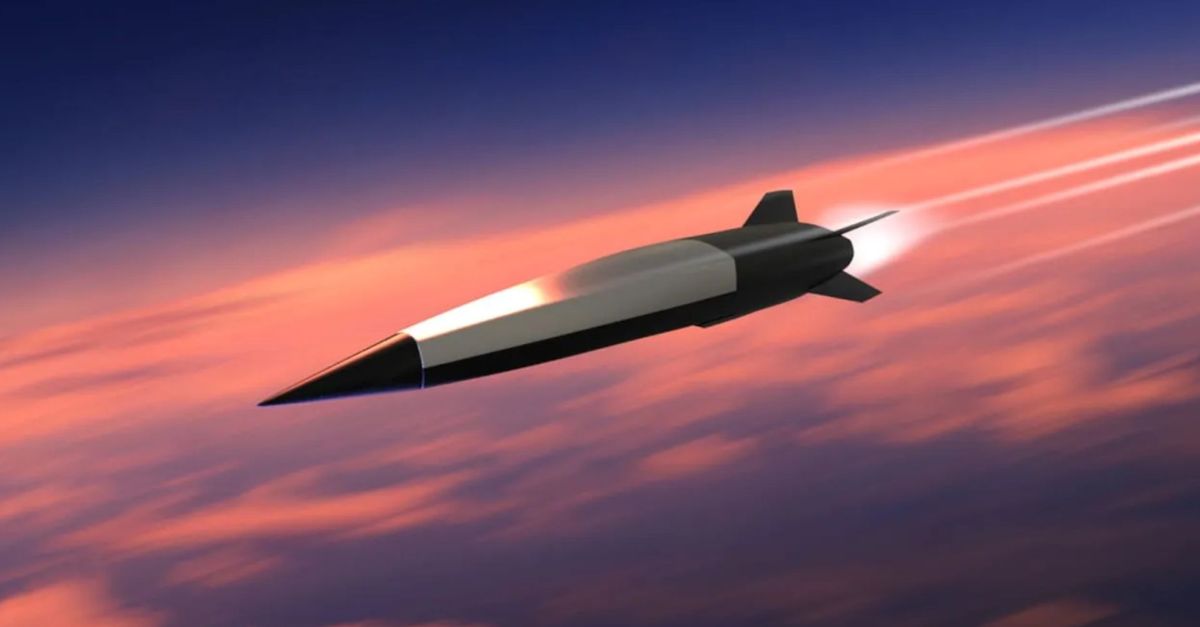Breaking News
Taiwan aims to become one of most advanced country on hypersonic missiles and gliders.
Following the successful development of supersonic missiles, Taiwan is eager to join the hypersonic race by launching efforts in "scramjet technology," a crucial element in the development and manufacturing of hypersonic weapons. Taiwan is keeping pace with the rapid advances in missile technology by developing supersonic anti-air and anti-ship missile systems such as the Sky Bow and Hsiung Feng.
Follow Army Recognition on Google News at this link

Concept picture to illustrate Hypersonic missiles (Picture source:AI generated)
In the future, it is likely that Taiwan will want to join the hypersonic movement, as evidenced by an advanced technology initiative from the Armaments Bureau on scramjet engines, indicating that a long-range missile program may be under development.
According to a recent report from Liberty Times, the System Development Center of the National Chung-Shan Institute of Science and Technology (NCSIST) recently submitted a groundbreaking proposal for the "National Defense Advanced Technology Research Program" of the Armaments Bureau for 2025. The project aims to create heat-resistant protection materials and optimize the ignition and flame retention of scramjet engines over three years to enhance propulsion efficiency.
Due to their simplified design and higher flight altitudes, hypersonic weapons are faster and more maneuverable than modern supersonic weapons. They pose a greater threat than traditional ballistic missiles and significantly reduce the enemy's reaction time due to their ability to change direction in flight. Although the Taiwanese government has not explicitly planned to develop hypersonic weapons, the current NCSIST scramjet engine research project proposal also reveals that the main goal of the program is cutting-edge hypersonic propulsion technology.
The initiative aims to collaborate with academic institutions to improve engine design and establish solid foundations for the future development of hypersonic engine technology. This is significant as Taiwan has strengthened its military capabilities in preparation for a possible invasion by China.
Taiwan has been interested in hypersonic weapons for some time. This latest development comes a year after the Taiwanese Air Force reportedly launched a $415 million project in 2023 under the code name "Feiji No. 2" to develop and convert the Yun Feng II missile into the Ching Tien hypersonic cruise missile. This missile, which is the first of its kind to be employed by the military due to its long range, is entering mass production and is being supplied to the Air Force's missile and air defense command. Earlier this month, Su Yu-pen, an advisor at the Chungshan Institute of Science and Technology, stated that thermal design and materials science would be crucial to the country's efforts to create hypersonic technology. He noted that Taiwan is not lacking in resources or knowledge in other areas related to hypersonic missile systems.
The super-scramjet program demonstrates the military's intent to equip itself with a long-range system capable of deterring China. On its part, Beijing regards Taiwan as a renegade Chinese province and has vowed to unify it with mainland China, by force if necessary.
China has become one of the global leaders in the hypersonic arms race, even with the United States lagging behind. In August 2022, China launched its hypersonic DF-17 missiles from a ground platform during live-fire exercises conducted near Taiwan.
In addition to developing hypersonic missiles, Taiwan has boosted its firepower by developing advanced supersonic missiles like the Hsiung Feng III. It has also developed long-range missiles capable of striking deep into China, such as the Hsiung Feng IIE (HF-2E) and the Ching Tien missile. According to reports, Taiwan has four types of missiles capable of reaching distances over 1,000 kilometers.
All these efforts aim to strengthen its military power and give it the capability to counter a potential Chinese invasion. As part of its ongoing efforts to bolster its capabilities and perfect the skills of its troops, Taiwan has also announced live-fire exercises that appear intended to deter the People's Liberation Army (PLA) from attacking the island.


























